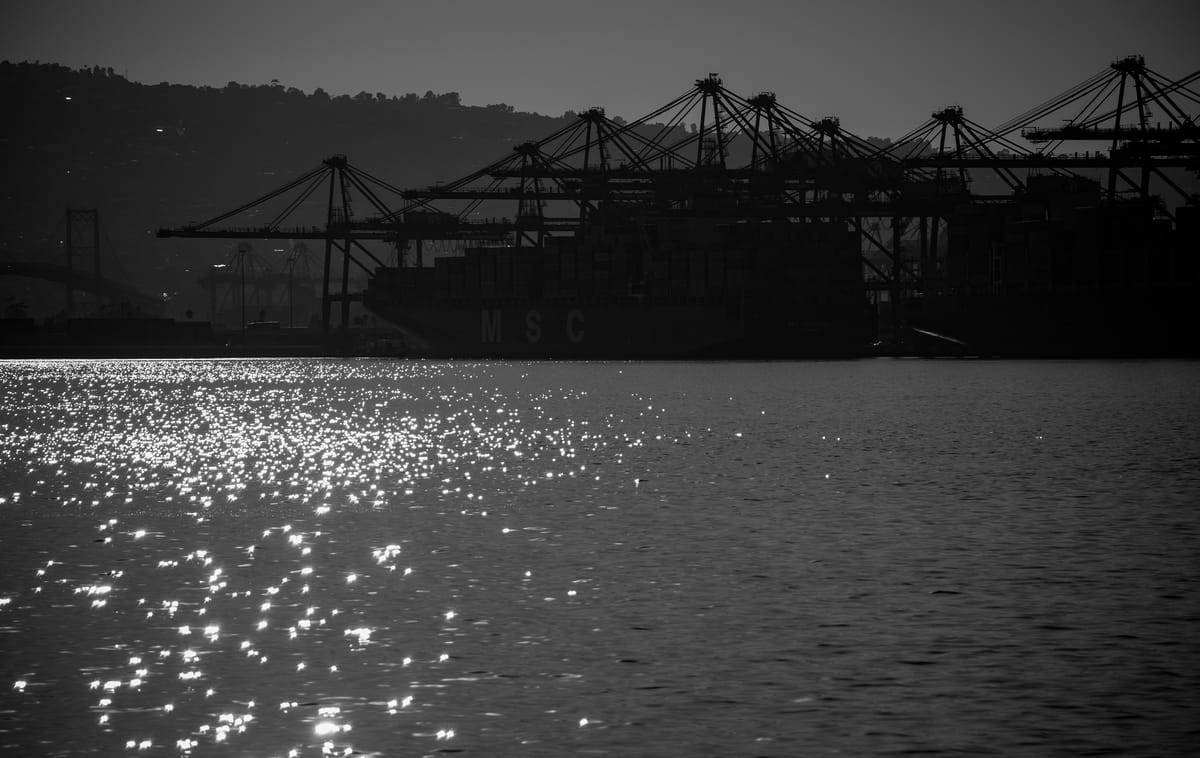Uncertainty at East and Gulf coast ports, consumer demand fuel record November at San Pedro Bay ports
The ports of Long Beach and Los Angeles moved nearly 1.77 million containers last month, up 5.7% from November 2020.

More containers moved through the San Pedro Bay ports last month than in any November in their more than a century history, the agencies reported Wednesday.
Workers at the Port of Los Angeles moved 884,315 20-foot-equivalent units, or TEUs — the standard measure of shipping containers — last month, officials announced, making it the second busiest November on record behind when 889,748 TEUs were processed.
“We are well on pace to exceed 10 million container units for only the second time in our 117-year history,” said Port of Los Angeles Executive Director Gene Seroka, who added that the feat is a “remarkable milestone.”
Despite a busy year, the Los Angeles port will not break its annual cargo record of nearly 10.68 million TEUs set in 2021. LA, however, will easily hold onto the title of busiest port in the United States.
In Long Beach, meanwhile, dockworkers moved 884,154 TEUs last month, officials said Wednesday. The figure marks a 12.8% increase from November 2020, which was previously the busiest November in the port’s 113-year history.
Long Beach port workers are on track to move 9.6 million TEUs by the end of the year, breaking the previous record of 9.38 million set in 2021 — a year filled with supply chain breakdowns and backlogs amid the coronavirus pandemic. This year, operations at the ports have not seen congestion, officials noted.
Combined, the ports moved nearly 1.77 million TEUs in last month, up 5.7% from November 2020, which previously held the record for busiest November.
“Imports are being driven by strong consumer demand while retailers continue to move cargo here out of concern for labor negotiations at ports on the East and Gulf coasts,” Port of Long Beach CEO Mario Cordero said in a statement.
The International Longshoremen’s Association, which represents tens of thousands of East and Gulf coast port workers, and the Pacific Merchant Shipping Association (USMX), which represents container carriers, terminal operators and port associations, have been locked in contentious contract negotiations since late May. Talks stalled for months but the groups came to a tentative agreement on some issues, including a 62% wage increase over six years, on Oct. 3 after dockworkers in those regions went on strike for the first time in nearly 50 years.
The tentative agreement extended the master contract to Jan. 15 while the groups worked out details on issues such as automation, which is one of the biggest sticking points amid negotiations. In a Nov. 13 update, ILA leadership said negotiations once again broke down after the USMX pushed for “semi-automation.”
“It’s disheartening that after making strides in our talks, management resorted to tactics designed to mislead and divide,” the union wrote.
“Unfortunately, the ILA is insisting on an agreement that would move our industry backward by restricting future use of technology that has existed in some of our ports for nearly two decades – making it impossible to evolve to meet the nation’s future supply chain demands,” the USMX said in a Nov. 13 statement, adding that it is “not seeking technology that would eliminate jobs.”
Following a Dec. 12 meeting with union leaders, President-elect Donald Trump took to his social media platform to voice his support of the ILA and its pushback against automation at U.S. ports.
“I’ve studied automation, and know just about everything there is to know about it,” Trump wrote. “The amount of money saved is nowhere near the distress, hurt, and harm it causes for American workers, in this case, our Longshoremen.”
In a statement the same day, the USMX said it “appreciates and values” Trump’s statement on the importance of American ports and the jobs they support.
“But this contract goes beyond our ports – it is about supporting American consumers and giving American businesses access to the global marketplace,” the USMX wrote. “To achieve this, we need modern technology that is proven to improve worker safety, boost port efficiency, increase port capacity, and strengthen our supply chains.”
As the Jan. 15 expiration date, it remains unclear if dockworkers will strike again. In a Nov. 13 message, union leadership acknowledged that strikes are “a tool of last resort” that “are a hardship for members and their families, but when backed into a corner, we will not hesitate to wield that weapon.”
Experts are torn on whether or not workers will strike again, according to trade publication Supply Chain Dive, which noted that Trump’s vocal support has yet to move the needle. Some industry leaders say we’re heading toward a strike, while others think it unlikely — but all agree the future is uncertain.
“What I suspect will happen, and I could be wrong about this, we don’t know what the future holds, that they will come to an agreement that reaffirms the job protections that ILA members already have under the current agreement that they’re still working under,” Will Brucher, assistant teacher professor in the Labor Studies and Employment Relations Department at Rutgers University, told SCD. “That agreement might be enhanced with additional language that specifies that whether it’s the use of these partially automated cranes or whatever the other technologies may come, that there will be job guarantees that ILA members will get the right to work and maintain the new technologies.”

We need your support.
Subcribe to the Watchdog today.
The Long Beach Watchdog is owned by journalists, and paid for by readers like you. If independent, local reporting like the story you just read is important to you, support our work by becoming a subscriber.





